Today was an early start as we had to be on the bus for 7.30am. There were at first 2 lanes then we moved on to country roads, although they were good. Fir trees of various sizes (often trimmed) were popular. We also saw the well tended cemeteries and shrines. As usual we had a brief comfort stop, this time with free toilets (bonus!) at a busy shop. 2 other coaches pulled up while we were there.
Our next stop was at Czestochowa to view the Black Madonna at the 14th century monastery
. This is world famous in Poland! They refer to her as 'our miraculous lady' and she is known as the Queen of Poland. It is a small painting on wood from the Middle East and over 1000 years old. There are scars on her face where the painting was slashed in the 14th century. We also saw the various vestments. Many allow you to see the Madonna and baby’s faces only and others seemed to cover the whole painting for protection. Some were embroidered and others were covered in jewels, silver and gold. The crowns on the newest vestments had been blessed by John Paul II, not the last time we heard his name here.
We had to line up to slowly go past the painting while one of the many masses (14 per day, 9 in Polish) for the day was in process. The cathedral has a very ornate ceiling and a number of rosary beads hanging on the walls. There were lovely chandeliers. The priests are Pauly (sp?) monks so were in white robes and the children, who were there for their first communion, were also in white
. It is common for children to travel here for their first communion with parents and the local priest, so we saw a number of such groups at the mass and in the grounds.
Every year people walk for 9 days from Warsaw to get here on August 15. It is a 240 km journey.
Guides here are often nuns and priests. It was not clear if ours was a nun or a devoted lay person, such are the designs of the modern habits. Before we saw the painting (‘the highlight of your tour’) she told us the history and also showed us treasures, including rosary beads made of bread from the concentration camps (people of Jewish background were interred even if they were catholic). We also saw a number of the gifts made when various rulers were crowned here. It was a fortress as well as cathedral.
Outside, the various building styles showed how it been built over the centuries. The Fortress was never conquered so most is original
. There is a place for a nativity scene at Christmas. We wandered round and got lunch (hot dogs) and saw several mentions of Pope John Paul II in the surroundings. There was a nearby cache but we were short of time so it will join the many we have never found.
Then back on the bus with everyone on time again.
Our next stop (what a contrast!) was at Birkenau, the large former death camp. Many of the barracks remain as well as the railway tracks that stop there, otherwise it is a barren place. People just walked around quietly. It is sobering that the whole Camp was purpose built, modeled on Auschwitz but on a hugely larger scale. We had only a short stop but we found out later that 1 hour is recommended so you can appreciate the size more, by walking around the full 175 hectare area. There are 300 barracks. 70% of the people were killed immediately after arrival and the others were used as slave labour. Various documents, the gas chambers and the crematoria were destroyed by the Germans in 1945 and the prisoners who were left were sent on a death march.
At Auschwitz, our group was split into 2 groups of about 20 for the tour. We all had earpieces so it was also a quiet place. Our guide was excellent as she gave personal focus to the visit as well as giving us an idea of the sheer numbers. For example, when we went to the display of suitcases she pointed to one that told us it belonged to a boy of about 2 who’d arrived with his family
. Simply because he was a Jew (regardless of his age) he would have been killed immediately. She continually posed questions to make us reflect, and then she carefully answered them.
Auschwitz was set up as a concentration camp, chosen because there was a train to the village and it already was an existing military camp with barracks etc. Initially inmates were political prisoners, mainly from Poland – ie intellectuals (teachers, doctors architects), or threats (young men) and those simply in the wrong place at the wrong time i.e. they were in a village that was now to be used by ethnic Germans and military officers etc. This is known because the first inmates were photographed and their details documented. We saw blocks of such photos to get an idea of the scale then some of the individual stories were told. The camp was also used for Soviet POWs.
It was not until later that inmates were tattooed. There was a photo of a man with 2 numbers. He had escaped and was later send again to the camp. He had since revisited the camp and talked to the guides. The Germans used consecutive numbers but at intervals restarted with an A or a symbol in front so the total number could be hidden. The Jews, who were gassed immediately, were not tattooed or recorded in any form.
Many pictures had been taken by the Germans themselves and then by the Russians after liberation
. We were haunted by one girl in a group photo, She looked 40 and yet was only 14. One room had a series of pictures by a former inmate showing daily life. We saw the daily rations for the concentration camp workers - a watery broth, a small block of bread and 2 drinks of water (and they worked 11 hour days).
The guide said a few times that hope is the last thing to die. We saw the train tickets saying Krakow with a change at Auschwitz, to disguise the final destination, and many Jews seemed to come happily to the camp. After all the conditions in the ghettos were dreadful, and they had been told to bring a suitcase.
The tour included the punishment block. We saw the wall of death, where problem prisoners were shot even after the gas chambers were brought in. We saw the cell where prisoners were put, to starve to death. The whole block was used to test Zyklon B (cyanide) to see if it would be suitable for the gas chambers. 700 had been herded into the block and then gassed
. The Nazis later ordered special odourless cyanide, and we saw a pile of empty tins that had contained the pellets. There were also standing only cells, smaller than a shower tray that held 4 prisoners.
The guide told us the story of a monk (St Maximillion) who had been an inmate and had offered to take the place of a condemned man. He lasted in the punishment cell for 14 days when he was expected to die within 8. The guards became quite concerned by his strong spirit and finally gave him a lethal injection. He was later canonized by John Paul II and the man he replaced lived for over 90 years. She also mentioned the Roman Catholics and even the German army officers who were sent there with their families when they were identified as of Jewish heritage.
The tour had also taken us past displays of shoes, combs, eyeglasses, hair – all retrieved after the liberation. Later that evening people commented on the children’s items and also the single pair of women’s shoes that were visible in front of the thousands of mixed single shoes
. The hair was used in place of horsehair by factories making fabric for uniforms. The combs and brushes had recently been moved to protect them from the flooding. The guide said handling the items was the hardest thing she had had to do.
There were scaffolds where some prisoners had been hung including those who had blown up one of the gas chambers in Birkenau. Birkenau was much bigger and built as a death camp in 1942 with 4 crematoria where Auschwitz had only one. Birkenau was largely destroyed by the Germans before leaving but not Auschwitz. Because it was turned into a museum soon after the war it is still largely complete.
Our tour concluded in the square where the condemned had to strip before being herded into a gas chambers. Birkenau had the mock showers, but not Auchwitz. We were allowed to take pictures in the grounds but not in any buildings.
While we were looking quietly at the crematoria one of the group started to take a photo only to be loudly remonstrated with by another member of our group. The rest of us, including the guide, were speechless and embarrassed as they had a loud row. It was not a tour you do for entertainment, but it is ‘a site of human concern and for that reason people should visit it’. Almost all the group saw it in that light.
It was a quiet trip into Krakow and a lot of discussion at dinner about the visit.
To Krakow via Auchwitz
Friday, June 04, 2010
 Krakow, Southern Poland, Poland
Krakow, Southern Poland, Poland
Other Entries
-
1The Starting Line
May 2213 days prior Nelson, New Zealandphoto_camera1videocam 0comment 10
Nelson, New Zealandphoto_camera1videocam 0comment 10 -
2Our last stop in NZ
May 2213 days prior Auckland, New Zealandphoto_camera1videocam 0comment 0
Auckland, New Zealandphoto_camera1videocam 0comment 0 -
3Beijing or bust...
May 2312 days prior Beijing, Chinaphoto_camera7videocam 0comment 2
Beijing, Chinaphoto_camera7videocam 0comment 2 -
4On the Wall
May 2411 days prior Beijing, Chinaphoto_camera12videocam 0comment 4
Beijing, Chinaphoto_camera12videocam 0comment 4 -
5Hitting the streets of Beijing
May 2510 days prior Beijing, Chinaphoto_camera13videocam 0comment 0
Beijing, Chinaphoto_camera13videocam 0comment 0 -
6Goodbye Beijing hello Cologne
May 269 days prior Beijing to Cologne, Chinaphoto_camera3videocam 0comment 1
Beijing to Cologne, Chinaphoto_camera3videocam 0comment 1 -
7A visit to the Dom
May 278 days prior Cologne, Germanyphoto_camera11videocam 0comment 1
Cologne, Germanyphoto_camera11videocam 0comment 1 -
8Eau de Cologne
May 287 days prior Cologne, Germanyphoto_camera5videocam 0comment 0
Cologne, Germanyphoto_camera5videocam 0comment 0 -
9Beer and Chocolate
May 296 days prior Cologne, Germanyphoto_camera8videocam 0comment 2
Cologne, Germanyphoto_camera8videocam 0comment 2 -
10Training to Frankfurt
May 305 days prior Frankfurt, Germanyphoto_camera5videocam 0comment 2
Frankfurt, Germanyphoto_camera5videocam 0comment 2 -
11"Ich bin ein Berliner"
May 314 days prior Berlin, Germanyphoto_camera11videocam 0comment 4
Berlin, Germanyphoto_camera11videocam 0comment 4 -
12Undercover in Berlin
Jun 013 days prior Berlin, Germanyphoto_camera11videocam 0comment 2
Berlin, Germanyphoto_camera11videocam 0comment 2 -
13Poles apart
Jun 022 days prior Warsaw, Polandphoto_camera7videocam 0comment 0
Warsaw, Polandphoto_camera7videocam 0comment 0 -
14Markets and memories
Jun 031 day prior Warsaw, Polandphoto_camera16videocam 0comment 0
Warsaw, Polandphoto_camera16videocam 0comment 0 -
15Personal thoughts on Warsaw
Jun 04earlier that day Krakow, Polandphoto_camera0videocam 0comment 3
Krakow, Polandphoto_camera0videocam 0comment 3 -
16To Krakow via Auchwitz
Jun 04 Krakow, Polandphoto_camera10videocam 0comment 0
Krakow, Polandphoto_camera10videocam 0comment 0 -
17A Krakow rendezvous
Jun 051 day later Krakow, Polandphoto_camera13videocam 0comment 1
Krakow, Polandphoto_camera13videocam 0comment 1 -
18Romance on the Danube
Jun 062 days later Budapest, Hungaryphoto_camera10videocam 0comment 0
Budapest, Hungaryphoto_camera10videocam 0comment 0 -
19At large in Budapest
Jun 073 days later Budapest, Hungaryphoto_camera13videocam 0comment 1
Budapest, Hungaryphoto_camera13videocam 0comment 1 -
20A waltz in Vienna
Jun 084 days later Vienna, Austriaphoto_camera10videocam 0comment 2
Vienna, Austriaphoto_camera10videocam 0comment 2 -
21Vienna Paradox
Jun 095 days later Vienna, Austriaphoto_camera0videocam 0comment 0
Vienna, Austriaphoto_camera0videocam 0comment 0 -
22Proceeding to Prague
Jun 095 days later Prague, Czech Republicphoto_camera6videocam 0comment 1
Prague, Czech Republicphoto_camera6videocam 0comment 1 -
23The beauty of Prague
Jun 106 days later Prague, Czech Republicphoto_camera17videocam 0comment 0
Prague, Czech Republicphoto_camera17videocam 0comment 0 -
24Munchen mini stay
Jun 117 days later Munich, Germanyphoto_camera8videocam 0comment 1
Munich, Germanyphoto_camera8videocam 0comment 1 -
25The Romantic Road
Jun 128 days later Frankfurt, Germanyphoto_camera13videocam 0comment 0
Frankfurt, Germanyphoto_camera13videocam 0comment 0 -
26Meeting Margo in Marburg
Jun 139 days later Marburg, Germanyphoto_camera6videocam 0comment 0
Marburg, Germanyphoto_camera6videocam 0comment 0 -
27Out and about in Marburg
Jun 1410 days later Marburg, Germanyphoto_camera6videocam 0comment 0
Marburg, Germanyphoto_camera6videocam 0comment 0 -
28The football in Marburg
Jun 1511 days later Marburg, Germanyphoto_camera2videocam 0comment 0
Marburg, Germanyphoto_camera2videocam 0comment 0 -
29Exploring Hesse
Jun 1612 days later Marburg, Germanyphoto_camera14videocam 0comment 1
Marburg, Germanyphoto_camera14videocam 0comment 1 -
30South to the Alsace
Jun 1713 days later Mittelbergheim, Francephoto_camera6videocam 0comment 1
Mittelbergheim, Francephoto_camera6videocam 0comment 1 -
31Vins des Pay
Jun 1814 days later Mittelbergheim, Francephoto_camera6videocam 0comment 1
Mittelbergheim, Francephoto_camera6videocam 0comment 1 -
32Strasbourg and Beyond
Jun 1915 days later Mittelbergheim, Francephoto_camera14videocam 0comment 0
Mittelbergheim, Francephoto_camera14videocam 0comment 0 -
33Back to Bodensee
Jun 2016 days later Meersburg (Bodensee), Germanyphoto_camera5videocam 0comment 0
Meersburg (Bodensee), Germanyphoto_camera5videocam 0comment 0 -
34Exploring Bodensee
Jun 2117 days later Meersburg (Bodensee), Germanyphoto_camera15videocam 0comment 0
Meersburg (Bodensee), Germanyphoto_camera15videocam 0comment 0

 Krakow, Southern Poland, Poland
Krakow, Southern Poland, Poland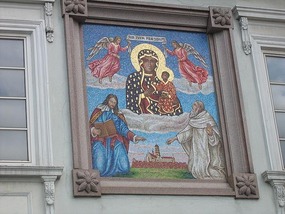
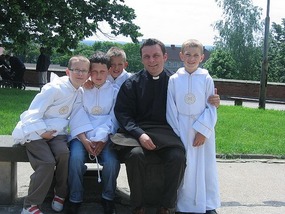
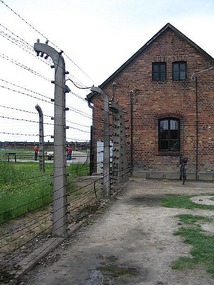
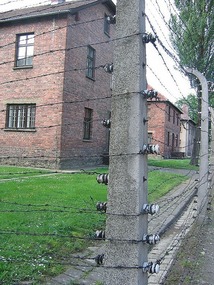

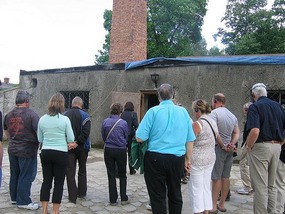
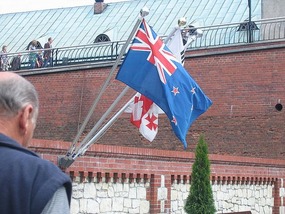








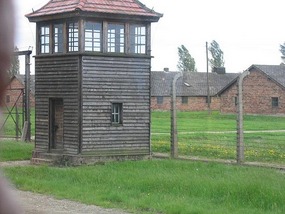
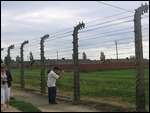
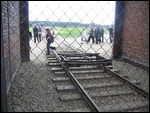
2025-05-23